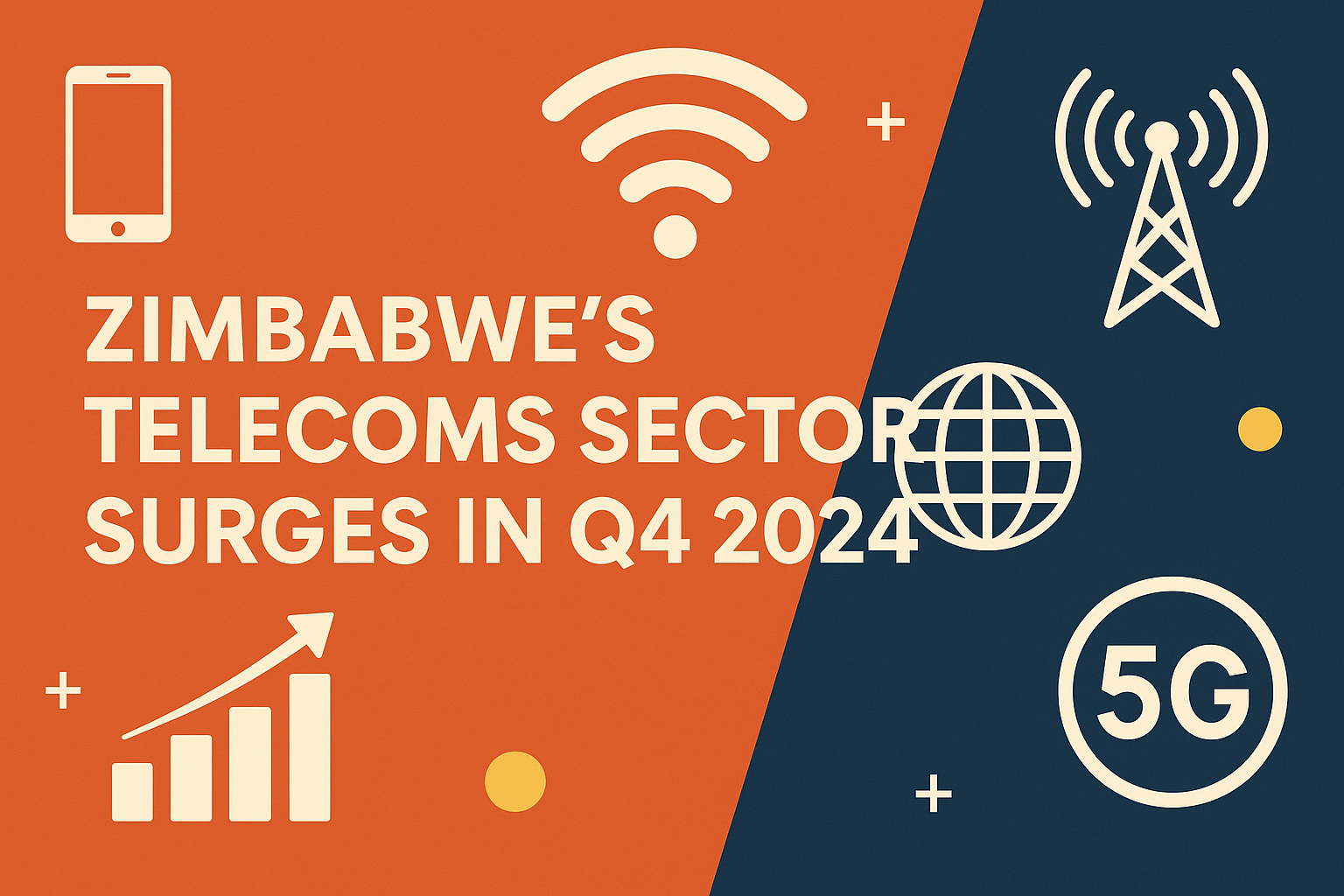Zimbabwe’s telecommunications and postal sector witnessed notable growth in the fourth quarter of 2024, with robust gains in mobile subscriptions, internet usage, and infrastructure investment, according to the Postal and Telecommunications Regulatory Authority of Zimbabwe (POTRAZ).
The quarter saw a 3.71% increase in active mobile subscriptions, reaching 15.68 million users, up from 15.12 million in Q3. This translated to a rise in mobile penetration from 98.6% to 102.26%. Econet continued to dominate the market, accounting for 72.29% of subscribers.
Voice traffic soared by 41.78%, largely driven by a 49.81% surge in net-on-net calls during the festive season. Despite a decline in international voice traffic due to growing reliance on over-the-top (OTT) services like WhatsApp and Telegram, local traffic volumes hit nearly 4 billion minutes. Econet further solidified its position, handling over 88% of total voice traffic.
Internet and data consumption also rose sharply, recording a 24.13% jump to 97.19 Petabytes. Econet once again led the growth, accounting for a 28% rise in its own traffic, while NetOne and Telecel posted more modest gains. Overall, internet penetration in Zimbabwe climbed to 81.49%.
One standout development was the explosive growth in Very Small Aperture Terminal (VSAT) subscriptions, which rose by over 500% following the introduction of Starlink in Zimbabwe. This shift underscores the growing demand for reliable internet in remote and underserved areas.
Financially, mobile network operators (MNOs) saw nominal revenues rise by 88.82% to ZWG6.42 billion, with real growth at 24.07% after adjusting for inflation and currency devaluation. Operating costs also increased, but the cost-to-income ratio improved by 4.36 percentage points, indicating better operational efficiency.
The rollout of 5G infrastructure was another key highlight, with 5G base stations increasing by 48.15% quarter-on-quarter. In contrast, 2G deployments slightly declined, reflecting the sector’s shift toward newer technologies to support faster connectivity and advanced services.
The fixed telephony segment showed modest improvement, with subscriptions increasing by 1.01%. However, Public Switched Telephone Network (PSTN) traffic declined by 5.99% due to ongoing substitution by internet-based communication platforms.
In the postal and courier segment, volumes dropped significantly by 27.12%, from 451,486 to 329,055 items. Despite this, revenues in the sector nearly doubled, and capital expenditure more than doubled, signaling resilience and potential recovery driven by digital transformation in logistics.
Looking ahead, POTRAZ projects continued growth fueled by increased 5G adoption, the entrance of low-earth orbit internet providers like Starlink, and a stronger emphasis on artificial intelligence and Internet of Things (IoT) applications. Stability in the local currency is also expected to create a more favorable environment for investment and innovation.
Overall, the fourth quarter of 2024 marked a pivotal period for Zimbabwe’s digital transformation journey, with expanding connectivity, rising consumer demand, and strategic infrastructure investment setting the stage for a more connected and competitive economy.


